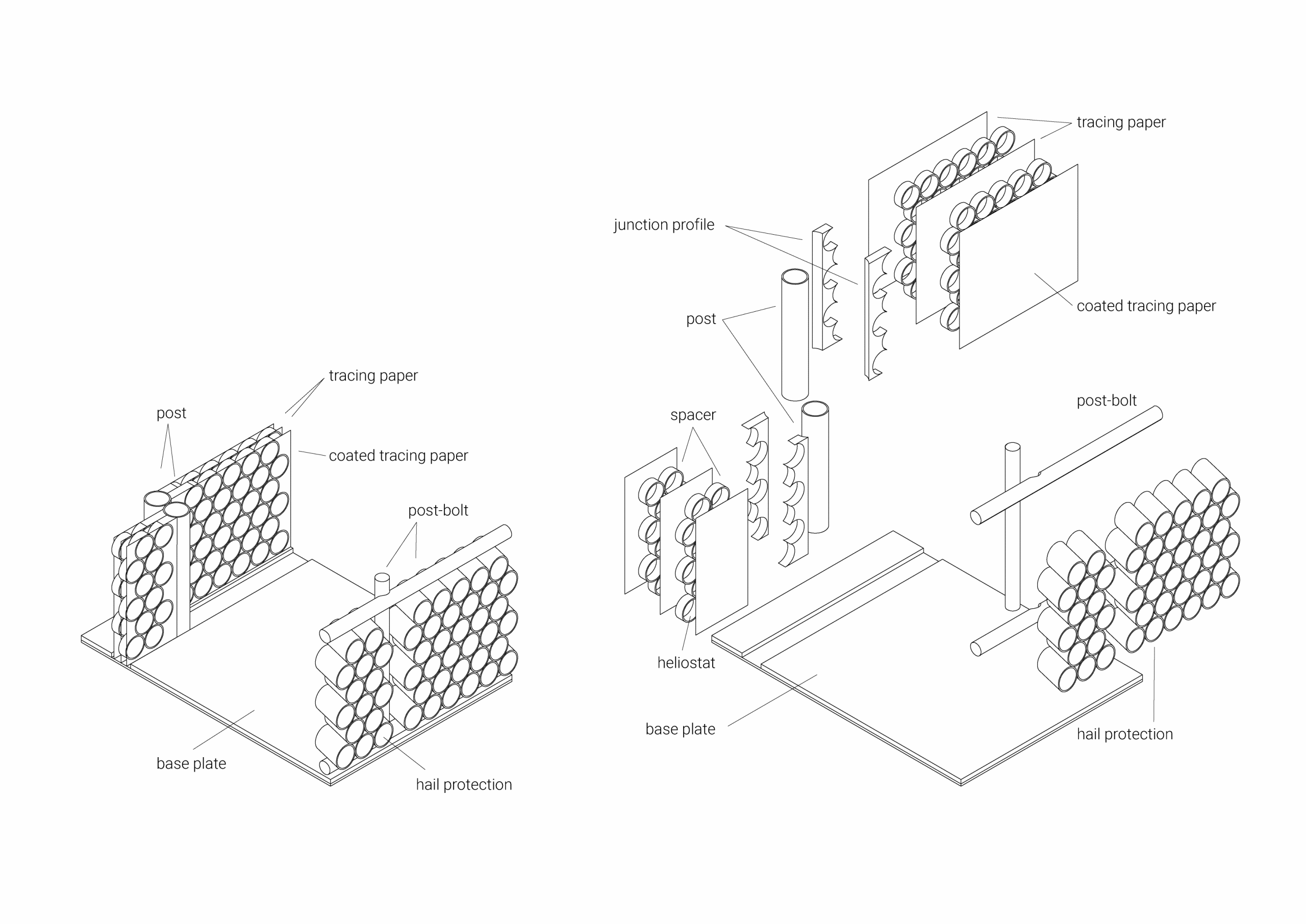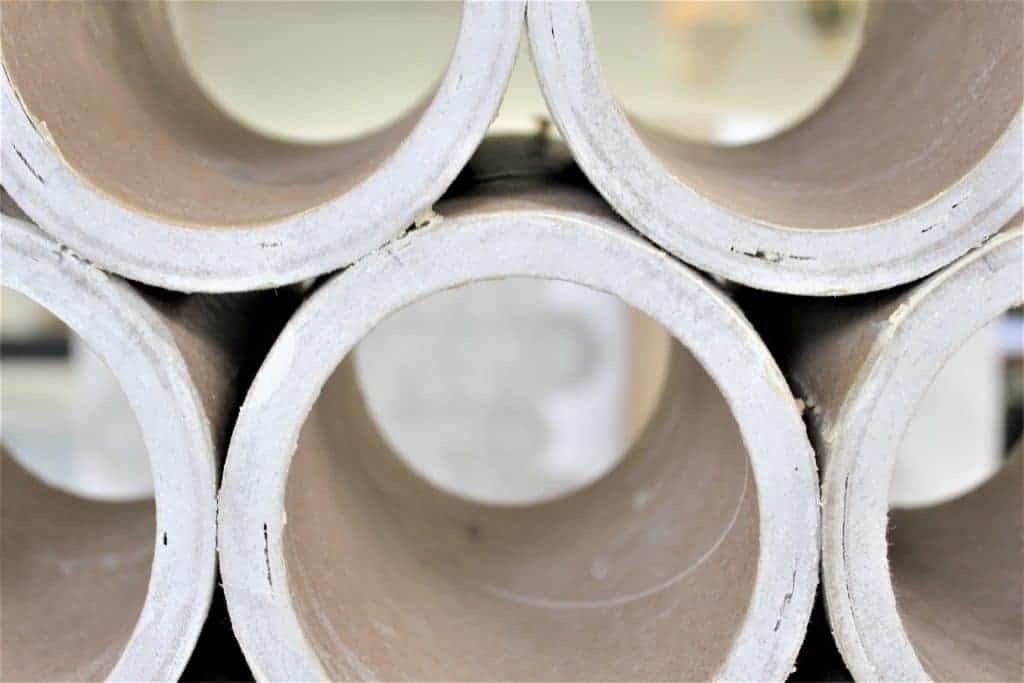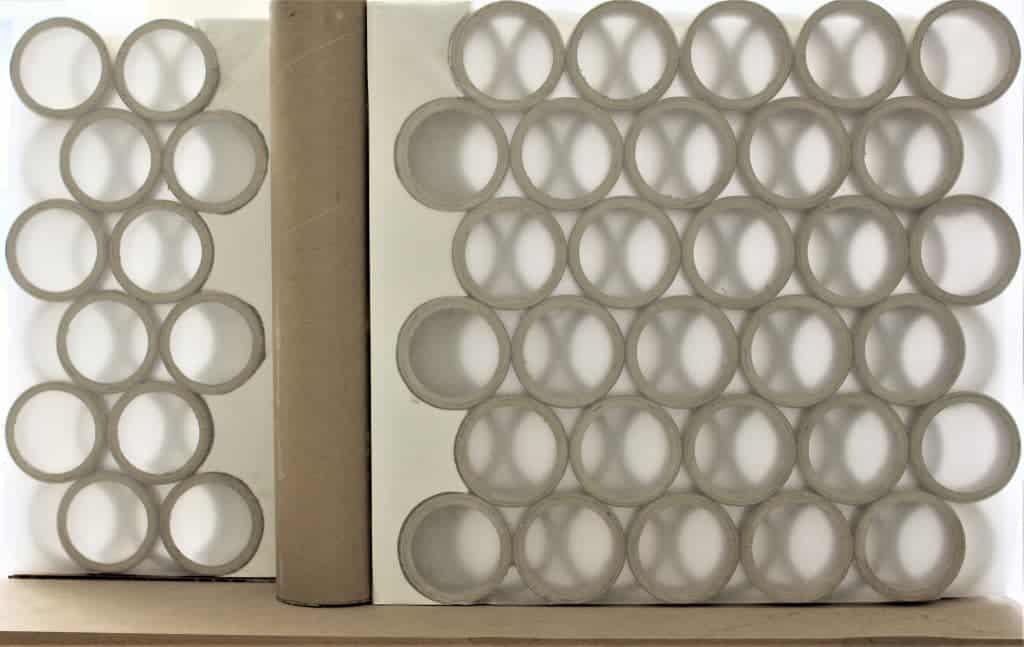Paper materials have various structural, ecological, and economic advantages: They are simple and inexpensive to produce, easy to process and shape, have high specific tensile strengths and good thermal insulating properties, and can be recycled several times. They are also lightweight materials and suitable for circular operations.
The main deficits of paper materials are the vulnerability to moisture and heat.
In order to exploit the possibilities of paper and ultimately have a realistically conceivable façade, research was carried out into translucency and water resistance.
design idea
In order to have the lowest environmental impact, the goal was to use natural products like beeswax and linseed oil to protect the paper material from moisture. For this purpose, experiments with paper, water, and various oils and wax were made. After all various combinations, transparent paper and beeswax had the most promising results for a translucent paper facade.
concept sketch
structure
the components
The construction is divided into two pieces: a hail protection as the first most vulnerable layer and a translucent facade as the second layer.
The design was inspired by traditional Japanese room divider “shōji”.





